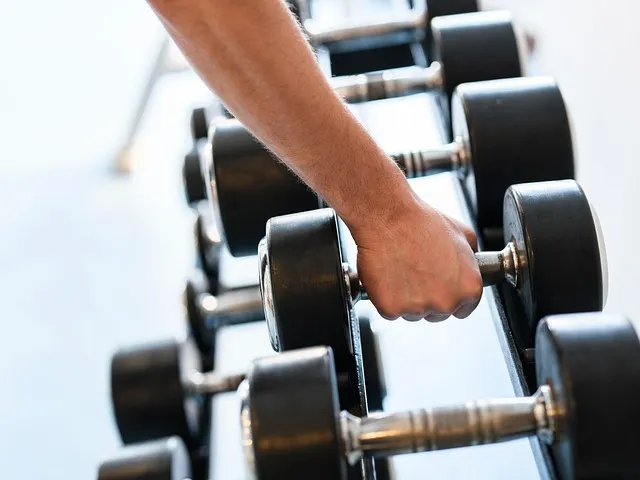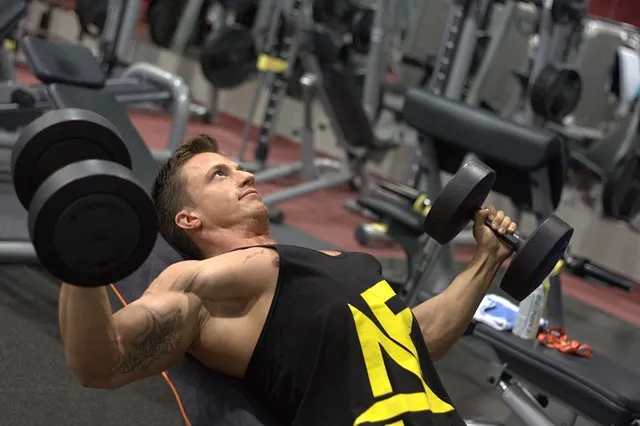Looking to build strength, improve flexibility, and stay fit without fancy gym equipment? A calisthenics workout plan could be your ultimate game-changer. This simple yet powerful bodyweight training method has taken the fitness world by storm, offering an adaptable and cost-effective way to transform your physique. Whether you're a beginner or someone looking to shake up your fitness routine, this article will walk you through everything you need to create a plan tailored just for you. Ready to get started? Let’s read!
What Is Calisthenics?
Calisthenics is a form of exercise that uses your body weight to build strength and improve fitness. This type of workout includes activities like push-ups, pull-ups, squats, and leg raises.
It's convenient because you can do it almost anywhere without needing any special equipment, making it a great choice for staying fit on the go.
How to Create Your Calisthenics Workout Plan
Creating a killer calisthenics workout plan is essential for beginners. To avoid burnout as a beginner, one must progress slowly but steadily. Let’s go through seven simple steps toward creating your individualized plan.
Step 1: Check Your Fitness Level
First things first, know where you stand. This helps in setting goals that are achievable and finding exercises that suit your fitness level.
Get yourself a Quick fitness test:
Hold a plank for 30 seconds.
Do as many push-ups or squats as you can with proper form.
Note your results.
Set specific goals: Increase push-ups from 5 to 15 in 4 weeks.
Step 2: Decide How Often You’ll Work Out
Stick to a schedule because it is highly important. Determine how many days per week you could consistently exercise.
Here's an example schedule to help you decide how often you'll work out:
Monday: Workout (e.g., cardio and strength training)
Tuesday: Rest day
Wednesday: Workout (e.g., yoga or Pilates)
Thursday: Rest day
Friday: Workout (e.g., full-body strength training)
Saturday: Rest or active recovery day (e.g., light walking)
Sunday: Rest day
This schedule starts with three workouts a week, allowing plenty of time for rest.
Step 3: Choose Your "Core" Exercises
Focus on exercises that work many muscles at once to get more benefits quickly.
Beginner Exercises:
Push-ups (Chest, Shoulders, Triceps): Start with wall push-ups, then try knee push-ups, and finally do standard push-ups.
Pull-ups (Back, Biceps): Start with band-assisted pull-ups. Work up to doing them without help.
Squats (Legs, Core): Begin with bodyweight squats. As you get stronger, add small weights.
Progression Tips:
Add Reps: When an exercise gets easy, do more repetitions.
Try Harder Versions: Move to tougher versions or add weights.
Use Less Help: For exercises like pull-ups, slowly use less assistance.
Keep Good Form: Always make sure your form is correct to avoid injury and get the best results.
This way, you build strength safely and increase difficulty as you improve.
Step 4: Determine Sets/Reps
A combination of sets and reps that are appropriate will help you achieve a particular fitness goal.
For strength: Perform 5 to 8 reps in 3 to 5 sets.
For muscle growth: Try 3 to 4 sets of 8 to 12 reps each.
For endurance: Attempt 15 to 20 repetitions grouped into 2 to 3 sets.
Step 5: Plan Your Workout
Arrange your exercises so that you are giving enough time for rest between them and hitting different muscle groups.
Warm-up (5–10 minutes): Dynamic stretches, jumping jacks, or light jogging.
Workout: Alternate upper and lower body exercises to allow rest between muscle groups.
Cool-down (5–10 minutes): Static stretches and deep breathing.
Step 6: Challenge Yourself Continuously
To keep progressing, gradually increase intensity:
Increase the number of reps or sets
Reduce the resting period between sets
Attempt more challenging variations of exercises.
Step 7: Prioritize Rest and Recovery
Rest is essential for muscle growth and preventing injuries. Muscles grow during recovery, not during exercise. Avoid overtraining by:
Plan one full rest day each week as a minimum
Do light activities such as yoga and easy walks on these days off.
Be aware of the feedback from your body and make necessary adjustments.
Here's a sample weekly calisthenics workout plan for beginners:
Day | Workout |
Monday | Full Body (Push-ups, Squats, Planks) |
Tuesday | Rest or Light Cardio |
Wednesday | Upper Body (Pull-ups, Dips, Pike Push-ups) |
Thursday | Rest or Yoga |
Friday | Lower Body (Lunges, Glute Bridges, Calf raises) |
Saturday | Core (Leg Raises, Russian Twists, Hollow-body hold) |
Sunday | Complete Rest |
Essential Equipment and Space
One of the best things about calisthenics is you don't need much gear. But having a few key items can open up your workout options. Here's what you'll want to get started:
Pull-up bar: Great for upper body workouts
Resistance bands: Help with assistance and adding resistance
Gymnastics rings: Super versatile for lots of exercises
Yoga mat: Gives you a cushion for floor exercises
Jump rope: Perfect for cardio and warming up
As for space, you don't need much. A clear area about the size of a yoga mat works for most exercises. If you can find a park with some basic equipment like bars, even better!
Warm-Up and Cool-Down Techniques
Good warm-up and cool-down routines help prevent injuries and boost your performance.
Warm-Up (5-10 minutes):
Prepare your body for exercise with these moves:
Dynamic Stretching: Loosens muscles and prevents injury.
Jumping Jacks: Boosts heart rate and blood flow.
Arm Circles: Warms up shoulders.
Leg Swings: Improves hip movement.
Bodyweight Squats: Prepares your legs for activity.
Inchworms: Engages the whole body.
Light Jogging: Slowly raises heart rate.
Wrist and Ankle Rotations: Prepares joints for movement.
Cool-Down (5-10 minutes):
Help your body recover after exercise:
Static Stretching: Relaxes muscles; hold each stretch 20-30 seconds.
Deep Breathing: Calms your heart rate.
Cat-Cow Stretch: Loosens your spine and eases tension.
Pros and Cons of Calisthenics
Pros of Calisthenics:
Builds strength using body weight.
Improves flexibility and balance.
Can be done anywhere, no equipment needed.
Boosts coordination and body awareness.
Good for all fitness levels.
Low cost, no gym membership required.
Cons of Calisthenics:
Limited weight resistance; harder to bulk up.
Progress can be slow.
Risk of injury if done with poor form.
May need more exercises for full body workout.
Can be repetitive and less motivating over time.
Requires learning proper techniques to be effective.
How Calisthenics Differs From Other Workouts
Understanding what makes calisthenics unique can help you appreciate its benefits. Here's how it stacks up against other popular workout methods:
Aspect | Calisthenics | Weight Training | Cardio |
Equipment | Minimal to none | Weights, machines | Varies (treadmill, bike) |
Muscle Building | Builds functional strength | Isolates muscle groups | Limited muscle building |
Flexibility | Improves overall flexibility | Limited flexibility benefits | Some flexibility benefits |
Portability | Can be done anywhere | Typically gym-bound | Often requires equipment |
Common Beginner Mistakes to Avoid
As you start your calisthenics journey, watch out for these common pitfalls:
- Not warming up – This can cause injuries.
Solution: Warm up for 5 to 10 minutes before starting.
- Advancing too quickly – Can make you tired and stop your progress.
Solution: Increase your exercise level slowly.
- Neglecting proper technique – This can lead to injuries and less effective workouts.
Solution: Always focus on doing exercises correctly.
- Overtraining – Prevents your body from resting.
Solution: Take at least one day off each week to rest.
- Ignoring nutrition – Eating right is important for progress.
Solution: Have a balanced diet that fits your exercise needs.
Final Thoughts
Getting started with a calisthenics workout plan is one giant leap closer to reaching your fitness goals. As you get stronger, don’t hesitate to adjust your plan to always keep pushing yourself. In case you have questions about the form or would like some personal advice, talk with a certified calisthenics trainer. They can provide tips that will apply directly to what you need according to your specific objectives.
Share this guide with friends and relatives who may want to travel the same path alongside you. You can inspire each other while having fun together along the way. Take the first step now and start your calisthenics workout plan; it’s astonishing how far our bodies can go!
Read Also Calisthenics Calorie Burn Guide: Maximizing Your Workout
अक्सर पूछे जाने वाले प्रश्नों
How long until I see results from a calisthenics workout plan?
Results vary, but most beginners notice improvements in strength and endurance within 4-6 weeks of regular practice.
Is calisthenics good for weight loss?
Absolutely! Calisthenics workouts can be high-intensity and burn lots of calories, making them great for fat loss when combined with a healthy diet.
How often should I change my calisthenics routine?
It's good to change things up every 4-6 weeks to avoid plateaus. Try altering exercises, rep schemes, or introducing new challenging variations.
Can I mix calisthenics with other exercises?
Sure! Calisthenics works well with activities like yoga, running, or weight training. Just make sure you're getting enough rest between workouts.
लेखक






